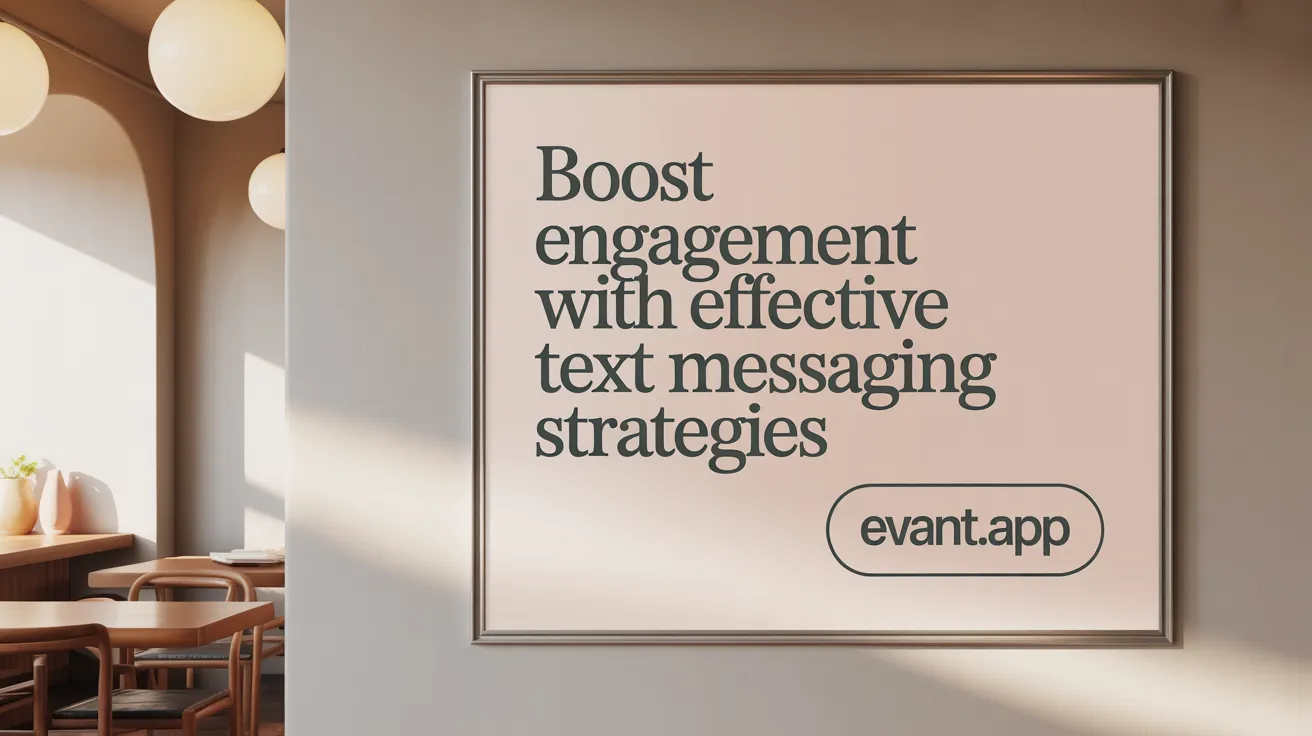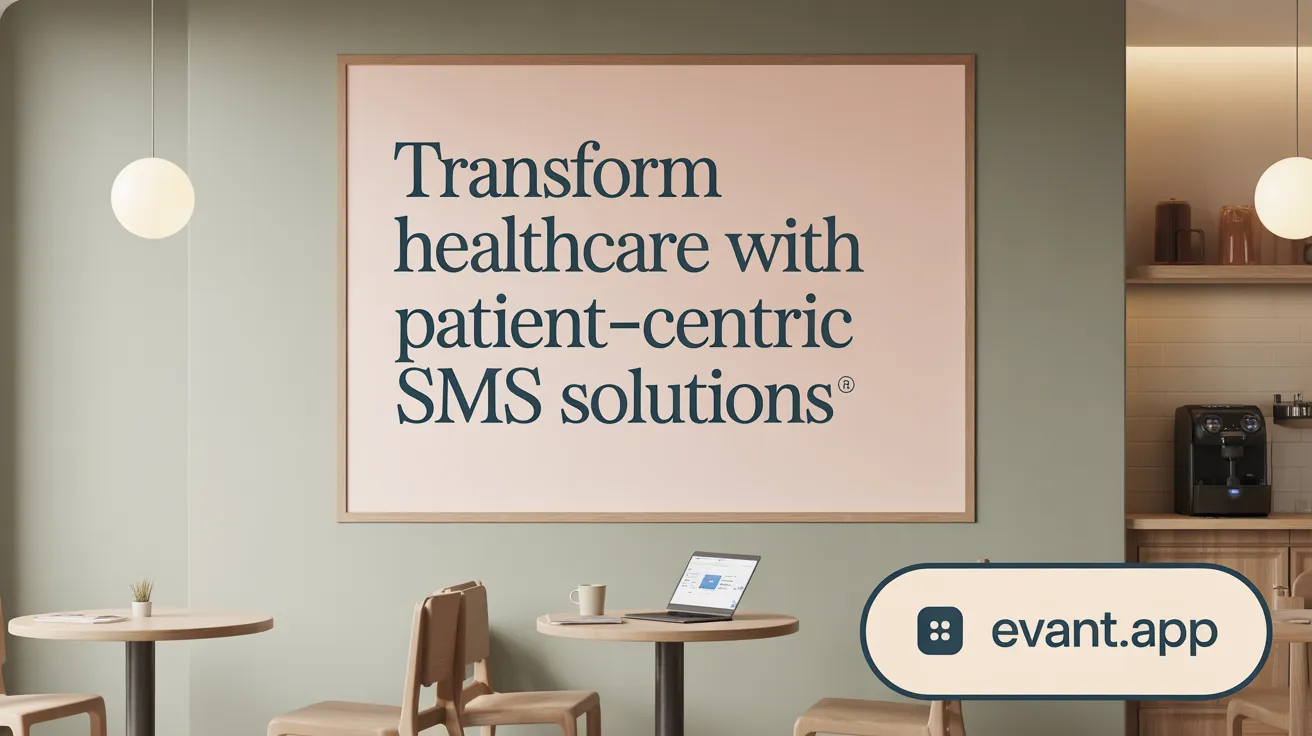Why Text Messaging Is Transforming Engagement Strategies
Text messaging has emerged as a powerful tool to enhance participant engagement across various sectors, from healthcare to research and education. With its unparalleled immediacy, accessibility, and high response rates, SMS offers a direct line of communication that can motivate participation, improve adherence, and foster lasting relationships. This article explores the multifaceted applications and best practices of utilizing text messaging to increase participant engagement, illustrating its transformative potential and challenges.
The Unique Advantages of Text Messaging for Participant Engagement
Accessibility of SMS Across Demographics
SMS is almost universally accessible since nearly every mobile phone can receive text messages without requiring internet connectivity. This broad accessibility allows it to reach diverse populations, including those with limited digital skills or who live in underserved areas. Studies highlight that text messaging is effective across different socio-economic and cultural groups, promoting equitable communication.
High Open and Response Rates
Text messages boast an impressive open rate of about 98%, with 90% of messages being read within three minutes of receipt. Response rates are also significantly higher than email, with averages around 45%. These statistics demonstrate SMS’s capability to engage participants promptly and effectively.
Immediacy and Cost-Effectiveness Compared to Other Channels
Unlike email, which can suffer low open rates and delays, SMS delivers messages instantly and directly to the user’s device without needing smartphone apps or internet. Its immediacy makes it ideal for timely reminders and urgent communications. Additionally, SMS campaigns are cost-effective and scalable, requiring relatively low resources for broad outreach.
Personalization and Segmenting Capabilities
Modern SMS platforms allow for message customization and segmentation based on participant behavior, preferences, and demographics. This ability to tailor content increases message relevance, encouraging higher engagement and loyalty. Features like keyword-based targeting and automated responses enrich the two-way communication experience, fostering ongoing interaction as described in SMS customer engagement strategies.
In summary, SMS offers a uniquely accessible, immediate, and personalized means of participant engagement that outperforms many traditional communication methods in reach and responsiveness.
Effective Text Messaging Strategies to Boost Engagement

Welcome and onboarding messages
Starting with a warm, personalized welcome message sets the tone for a positive interaction. Offering incentives during onboarding encourages immediate engagement and subscriber loyalty. Clear communication about what to expect helps build trust. For more on welcome message incentives and SMS customer engagement strategies.
Interactive elements such as quizzes, surveys, and gamification
Including quizzes, polls, and gamified content in text messages greatly increases response rates. Youth involvement studies show higher engagement when texts require replies or contain interactive components. Gamification also sustains long-term interest by rewarding participation milestones. Learn about SMS surveys, gamification for patient engagement, and interactive SMS games and innovative interactive SMS engagement.
Automated reminders for appointments and tasks
Automated texts reminding recipients about appointments or important tasks reduce no-show rates and improve adherence. These messages serve as timely prompts, ensuring users stay on track with minimal manual effort from staff. See examples of automated appointment and medication reminders and SMS messaging for appointment reminders.
Personalized follow-ups and motivational messages
Sending personalized follow-up texts tailored to the recipient's behavior boosts motivation and strengthens the connection. Positive messages acknowledging progress help maintain commitment and participant morale. Explore personalized SMS follow-ups and motivational SMS messages and positive psychology-based texting interventions.
Using exclusive content, incentives, and recognitions
Sharing exclusive content or sneak peeks via SMS fosters a sense of VIP treatment. Special offers, giveaways, and loyalty rewards communicated through text encourage ongoing interaction and deepen engagement. Further reading on exclusive SMS content, SMS giveaways, and SMS loyalty programs and SMS birthday rewards and VIP SMS loyalty programs.
Employing these strategies leverages SMS’s high open and response rates, driving meaningful and sustained participant engagement across various contexts. For comprehensive insights on SMS engagement strategies and maximizing SMS open rates and text messaging to increase patient engagement and medication adherence.
Text Messaging in Healthcare: Enhancing Patient Engagement and Adherence

Use in Outpatient Care and Medication Adherence
Text messaging has emerged as a versatile tool to support outpatient healthcare engagement and improve medication adherence. Automated reminders for appointments and medication dosing are commonly used to prompt timely care and compliance, particularly in populations facing barriers to consistent healthcare access.
Case Studies in Homeless and Youth Populations
Studies involving homeless adults in Boston demonstrated text messaging as a feasible intervention, sending appointment reminders, health tips, and medication information over several months. Similarly, youth development programs utilizing interactive text messages showed high engagement rates, particularly when messages prompted quizzes or questions, evidencing that SMS can effectively engage diverse, underserved groups.
Positive Trends in Appointment Keeping and Self-Reported Adherence
Although some trials report no statistically significant reductions in emergency department visits or hospital admissions, positive trends such as lowered appointment no-show rates and increased self-reported medication adherence have been observed. For instance, a Boston study noted a decrease in no-show appointment rates from 30.6% to 21.0% and an adherence score improvement nearing statistical significance.
Challenges with Technology Access and Phone Loss
Logistical challenges are notable, including high rates of phone loss, theft, and usage of basic phone technology, which limit intervention reach and consistency. These issues necessitate adaptable communication strategies tailored to the technology realities of the target population.
Emotional and Social Support Benefits from SMS Communication
Participants often report that receiving text messages fosters a sense of emotional and social support. This benefit highlights SMS communication not only as a functional reminder tool but also as a means to maintain connections and motivation, which may contribute positively to health behavior adherence.
Leveraging SMS for Clinical Trials and Research Participant Engagement

Recruitment, retention, and protocol compliance benefits
SMS messaging is a powerful tool in clinical trials, enhancing recruitment by reaching potentially eligible participants quickly and widely. Automated appointment reminders sent via SMS help improve site visit compliance and reduce no-show rates, leading to better retention throughout the study. Such messaging supports adherence to study protocols by providing timely medication reminders and motivational prompts, which are critical for trial success (benefits of text messaging in clinical trials, Automated appointment and medication reminders, Automated SMS appointment reminders).
Automated appointment reminders and survey links
Automated SMS reminders minimize manual follow-up efforts by study staff and ensure participants remember key visits. Additionally, delivering links to electronic patient-reported outcome (ePRO) surveys within text messages facilitates real-time data collection, increasing response rates and allowing more accurate monitoring of participant experiences and side effects (SMS messaging for appointment reminders, Text messaging health interventions, Texting in Mixed-Mode Surveys).
Motivational and educational messaging
Beyond reminders, SMS can be used to send motivational messages acknowledging participant effort and educational content to clarify trial procedures or support health behaviors. These messages foster a supportive environment, boost morale, and improve engagement over the study course (Motivational SMS messages, Text messaging for health behavior change, Emotional support from text messaging).
Real-time patient-reported outcomes collection
Text messaging enables quick and convenient gathering of participant feedback on treatment effects or adverse events. This immediacy aids researchers in monitoring safety and effectiveness dynamically, enhancing protocol adherence and participant safety (Real-time patient-reported outcomes collection, Rapid information dissemination in clinical trials, Participant engagement and retention).
Importance of trust-building and clear communication
Successful SMS engagement depends on transparent communication regarding study goals, data privacy, and participant role. Building trust through consistent, culturally sensitive messaging and personalized contact strengthens the participant-researcher relationship, promoting retention and data quality. Incorporating consent processes and ensuring compliance with privacy regulations further safeguards participant rights while sustaining engagement (Guidance on communicating with research participants, Participant Engagement and Retention, Behavioral strategies for participant engagement).
Boosting Community and Member Engagement with Text Messaging
Role of SMS in enhancing inclusivity and accessibility
SMS text messaging is a highly effective tool for community and member engagement due to its broad reach and accessibility. It is particularly valuable in digital deserts or underserved areas where internet connectivity might be limited. Text messaging supports inclusivity by offering features like text-to-speech, helping individuals with visual impairments or low literacy levels access information easily (Community Engagement with Text Messaging).
Multi-language and segmenting strategies
To maximize engagement, organizations use SMS segmentation and multi-language messaging to communicate more effectively with diverse audiences. Segmenting recipients based on preferences, behaviors, or demographics allows for personalized and relevant messages. Delivering content in multiple languages over SMS breaks down language barriers and ensures that all community members receive essential updates and participate fully (SMS marketing open rates and personalized communication).
Surveys and feedback collection via SMS
Organizations leverage SMS to collect instant feedback and data through short surveys and polls. This method encourages higher participation by allowing real-time responses on mobile devices. Using SMS surveys fosters a two-way interaction with community members or members, enabling timely insights that guide decision-making and improve services (Using Text Messages in Public Health Research, SMS Surveys and Interactive Engagement).
Building communities through exclusive invitations and interactive messages
Exclusive invitations to events or special groups sent via SMS help create a sense of belonging and community. Interactive messaging strategies such as quizzes, polls, and keyword-triggered responses further boost engagement by actively involving members rather than simply delivering information (Innovative Interactive SMS Engagement, SMS Customer Engagement Ideas.
Examples from public health and membership organizations
Public health initiatives use SMS to disseminate rapid emergency alerts, remind residents of health programs, and gather community input efficiently. Membership organizations increase participation and loyalty by sending personalized onboarding messages, recognizing member contributions, and delivering educational content—all through SMS channels that ensure direct, timely, and personal communication (Text messaging to increase outpatient care engagement, Member Engagement Strategies).
Maximizing Engagement in Education Through SMS Communication

Student retention and success via timely reminders
SMS communication plays a pivotal role in boosting student retention by delivering timely reminders about critical academic deadlines, financial aid, and registration tasks. For instance, Austin Community College used SMS to send reminders on financial aid deadlines and workshops, resulting in a 15% increase in student persistence. Such immediate and accessible messaging helps reduce barriers to enrollment and encourages sustained engagement.
Personalized academic progress and support messages
Beyond reminders, SMS allows colleges to send personalized updates on academic progress and attendance. This tailored communication fosters a sense of belonging and promotes proactive support. Pellissippi State Community College's initiative to engage students with personalized SMS updates led to an average GPA increase of 0.27 points after just one semester, highlighting the effectiveness of this approach.
Integration with CRM systems for tailored communication
Integrating SMS platforms with Customer Relationship Management (CRM) systems enhances the ability to tailor messages according to individual student behavior and preferences. This personalization increases response rates and reduces opt-outs. By leveraging CRM data, institutions can send well-timed, relevant messages that drive student engagement more effectively, as discussed in SMS messaging for customer engagement and personalization strategies.
Peer mentorship and motivational messaging examples
Peer mentorship programs, such as the one at Brigham Young University, utilize SMS to connect first-year students with mentors for academic and emotional support. Motivational messages through SMS also help maintain morale and encourage persistence, making students feel part of a supportive academic community. This approach is supported by research on peer mentorship text messaging and real-time text updates for students.
Impact on enrollment and academic outcomes
SMS strategies have demonstrated significant positive outcomes in higher education. At the University of California, Los Angeles (UCLA), mass texts boosted applications for financial aid and increased awareness of campus health resources. Similarly, automated SMS campaigns have improved application completions and student retention rates, contributing to overall academic success and institutional goals, as detailed in studies on SMS impact on healthcare utilization and patient engagement and the effectiveness of SMS engagement strategies in education.
Technical and Logistical Challenges in SMS-Based Engagement

Issues with device loss, theft, and technological limitations
One of the primary challenges in SMS-based engagement programs, especially when involving vulnerable populations such as homeless individuals, is the high rate of mobile device loss and theft. These events disrupt communication continuity and reduce intervention effectiveness. Additionally, the use of basic devices like flip phones can pose technology limitations, restricting the ability to interact with more sophisticated message formats or platforms (Text messaging to increase outpatient care engagement.
Privacy, data security, and compliance with regulations
Maintaining participant privacy and securing data are critical in SMS communication. Compliance with regulations like HIPAA in healthcare studies, and TCPA in marketing contexts, requires encrypted communication where necessary and clear management of participant consent and opt-out options (HIPAA compliant text messaging, TCPA requirements for SMS consent). Ensuring these safeguards while using SMS, which is inherently less secure than some digital channels, demands careful platform selection and message management.
Managing message frequency and avoiding participant fatigue
Optimal message frequency is essential to sustain participant engagement without causing annoyance or fatigue. Studies suggest that sustained or decreasing messaging rates tend to maintain higher engagement than increasing frequencies (SunText randomized controlled trial, Text messaging interventions for youth with type 1 diabetes). Overly frequent messages may lead to disengagement or opt-outs, highlighting the need for balance adapted to participant preferences.
Platform selection and message content testing
Choosing the right SMS platform is vital for scalability, reliability, and user experience. Testing message content and delivery methods in pilot phases ensures relevance, clarity, and cultural appropriateness. Personalization and interactive message designs also contribute to engagement but require robust backend systems to manage responses and data (Automated text message intervention, Innovative Interactive SMS Engagement).
Transitioning toward web-based chat and richer SMS interfaces
Emerging alternatives to traditional SMS include web-based chat platforms offering encrypted, multimedia-rich interactions with features like read receipts, message reactions, and media sharing. These platforms enhance communication security and user engagement but require internet access and more advanced devices, which may limit reach in some populations (Web-Based Messaging Introduction).
In summary, addressing device-related disruptions, ensuring privacy and legal compliance, managing message cadence, carefully selecting technology platforms, and exploring advanced messaging interfaces are all crucial for overcoming technical and logistical barriers to effective SMS engagement (Text messaging interventions for health, Text messaging health interventions).
Emerging Trends and Future Directions in SMS Engagement
How is artificial intelligence shaping SMS engagement?
Artificial intelligence (AI), including large language models (LLMs) like ChatGPT, is increasingly integrated with SMS to create conversational agents. These agents offer personalized, empathetic, and interactive communication, enhancing participant support and engagement in real time (Text messaging interventions for health, The advantages of conversational text, Master SMS Engagement in 2025).
What role does gamification and two-way messaging play?
Gamification techniques combined with interactive two-way messaging nurture higher participant involvement. For example, quizzes, milestone notifications, and instant feedback via SMS motivate users, sustain interest, and improve adherence in health and research settings (Text messaging health interventions, Innovative Interactive SMS Engagement, SunText randomized controlled trial).
How are SMS interventions combined with multimodal technologies?
Emerging strategies include integrating SMS with wearables and other digital platforms to deliver holistic health monitoring and tailored behavior change prompts. This multimodal approach deepens engagement by providing context-aware, timely interventions beyond plain text (Text messaging in mobile health, Text messaging interventions for health.
How is personalization in SMS communication advancing?
Enhanced personalization leverages big data and customer relationship management (CRM) systems. This enables highly targeted and relevant messaging based on individual behaviors, preferences, and demographics, leading to increased trust and responsiveness (SMS as a reliable marketing tool, Text messaging to increase patient engagement.
What impact do Rich Communication Services and multimedia messaging have?
RCS and multimedia messaging extend the capabilities of SMS by incorporating images, videos, interactive buttons, and richer content formats. These innovations offer a more engaging, dynamic user experience, improving communication effectiveness and participant satisfaction (Top SMS Message Strategies, SMS customer engagement ideas
Best Practices for Crafting Impactful SMS Engagement Campaigns
Securing Explicit Consent and Clearly Communicating Opt-In/Opt-Out Options
Obtaining clear and explicit consent before sending SMS messages is crucial. Businesses and organizations should inform recipients about the nature and frequency of messages and always provide an easy-to-use opt-out option. Clear identification of the sender in each message builds trust and transparency, aligning with regulations like the TCPA and CAN-SPAM Act.
Tailoring Message Timing and Frequency to Audience Preferences
Effective SMS campaigns respect audience preferences by sending messages at appropriate times, typically between 9 a.m. and 6 p.m., and by personalizing send times where possible. Maintaining balance in message frequency is important—sustained or decreasing frequency of interactive messages supports better engagement, while overloading recipients risks fatigue and opt-outs (Extended contact text messaging interventions).
Incorporating Feedback and Iterative Improvement
Collecting recipient feedback through surveys or interactive SMS features helps measure satisfaction and identify areas for enhancement. Engagement metrics should be analyzed regularly to iterate and optimize messaging content, timing, and style. Personalizing messages based on recipient behavior increases relevance and satisfaction, fostering loyalty (Innovative Interactive SMS Engagement, Collecting Feedback on Responsible Fatherhood Programs).
Balancing Promotional Content with Useful, Non-Promotional Messages
To maintain interest and prevent message fatigue, campaigns should mix promotional messages with valuable content such as health tips, reminders, exclusive updates, or customer service assistance. Engaging and conversational messaging encourages interaction and strengthens the relationship beyond sales or announcements (Text messaging customer engagement ideas, Text messaging interventions for health.
Monitoring Key Engagement Metrics to Optimize Campaigns
Tracking metrics such as open rates, click-through rates, conversion rates, opt-out rates, and response rates is essential for assessing SMS campaign effectiveness. High open and response rates indicate strong engagement, while elevated opt-out rates highlight potential over-messaging or irrelevant content. Continuous monitoring enables data-driven adjustments that maximize campaign success (Top SMS Message Strategies, SMS open rates and engagement in higher education).
Harnessing the Power of Text Messaging for Sustainable Engagement
Text messaging has proven itself as an indispensable tool to elevate participant engagement in diverse contexts, from healthcare to research and education. Its remarkable reach, immediacy, and adaptability enable tailored communication that not only motivates but also supports participants effectively. While challenges around technology access and privacy remain, ongoing innovations in SMS delivery and integration with emerging technologies promise to expand its impact further. Adhering to best practices and embracing personalized, interactive approaches will be key to unlocking the full potential of text messaging to build meaningful, long-lasting engagement that advances outcomes and enriches relationships.
Related Blogs


RSVP Tools: Best Options, Google RSVP Limitations & Why Text Wins
Michael PedoeemExplore the best RSVP tools, Google RSVP’s limitations, and why text RSVP is the most efficient for event planning with instant confirmations and reminders.


My School SMS: Bridging the Gap between Schools, Parents, and Students
Michael PedoeemMy School SMS - What's it all about


Ready to transform your community









